Slavery in Maryland
This essay undertakes a comprehensive examination of every relevant aspect of slavery in Maryland—from the development of its slave economy and industrial complex to the implementation of slave laws, migration patterns, institutional beneficiaries, the lived experiences documented in slave narratives, and the courageous efforts of Maryland-born abolitionists and civil rights laborers. The legacy of this history remains visible today in institutions that profited from slavery and in the ongoing socioeconomic conditions of Maryland's Black population.
The origins of slavery in Maryland date back to the early 17th century when English settlers first arrived in the Chesapeake Bay region. The colonial economy depended initially on indentured European labor, particularly from the British Isles, but by the mid-1600s, Maryland followed the Virginia model by transitioning to African slave labor to support its expanding tobacco economy. In 1642, the Maryland Assembly passed its first law referring to enslaved Africans, and by 1664 it adopted a law that legally codified slavery based on race, stating that all Black people imported into the colony would be considered slaves for life. This legal turning point solidified the racial caste system that underpinned slavery and ensured the generational transmission of enslavement based on maternal lineage.
The geography and climate of Maryland, particularly its fertile land along the Chesapeake Bay and its tributaries, made the region ideal for tobacco cultivation. Enslaved Africans became the primary labor force used to clear forests, till soil, plant and harvest tobacco, maintain irrigation systems, and construct infrastructure. The profitability of this labor system incentivized planters to import more enslaved Africans, particularly from the West African coast. Maryland’s slaveholders often relied on direct purchase through ports like Annapolis and Baltimore, which became increasingly important hubs for the internal slave trade as well.
The Maryland slave economy was not solely agrarian. By the late 18th century and into the 19th, the state’s proximity to the North and its role as a border state created a unique slave economy that combined plantation agriculture, urban slavery, and industrial labor. Enslaved people in Maryland worked not only in fields but also in shipyards, ironworks, warehouses, and domestic settings.
Slavery in Baltimore—a city that would grow into one of the largest slaveholding urban centers in the nation—manifested in distinct ways. Urban enslaved laborers often hired themselves out for wages that they were required to turn over to their enslavers. Some enslaved individuals worked in skilled trades such as carpentry, blacksmithing, and masonry, while others labored on the construction of roads, canals, and railroads. Their labor built much of Maryland's infrastructure, laying the physical and economic foundation of the modern state.
Maryland’s slavery industrial complex extended beyond physical labor and agriculture. The financialization of slavery through insurance, banking, shipping, and trade networks was deeply embedded in Maryland’s economic ecosystem. Financial institutions in Baltimore and Annapolis regularly provided loans backed by human chattel as collateral. Insurance companies headquartered in Maryland offered policies on enslaved persons, turning Black bodies into insurable, tradable commodities. Slaveholding families, corporations, and educational institutions profited immensely from this system, extracting generational wealth that continues to sustain privileged white Maryland families and institutions today.
Institutions such as Johns Hopkins University, the University of Maryland, and others were either founded by individuals connected to the slave economy or benefited from land and endowments generated through slavery. Johns Hopkins himself has come under scrutiny in recent years due to evidence that he held enslaved individuals and used enslaved labor to build his wealth. Likewise, Maryland corporations such as the Baltimore & Ohio Railroad were built with the labor of enslaved and free Black workers alike, and profited from contracts and commerce dependent on slavery. The wealth generated by such companies was reinvested into new industries, banks, and municipal developments that reinforced the racial and economic order established during slavery.
Slave migration in Maryland took multiple forms. Although Maryland did not experience the same scale of importation as the Deep South, the internal domestic slave trade—especially after the 1808 federal ban on the transatlantic slave trade—became a major facet of Maryland’s slave economy. As demand for cotton labor surged in the Deep South, Maryland enslavers began selling surplus enslaved people to traders operating routes down the Potomac River to ports like New Orleans, Natchez, and Mobile. Baltimore, Georgetown, and Alexandria were key departure points in this human trafficking pipeline.
Families were torn apart with devastating frequency, as children, mothers, and fathers were sold to distant plantations in Mississippi, Alabama, and Louisiana. Some of Maryland’s wealthiest families—including the Darnalls, Carrolls, and Calverts—were deeply enmeshed in this trade and profited handsomely from it.
The psychological trauma of such forced migrations is well documented in the many slave narratives originating from Maryland. These narratives remain among the most poignant and enduring testimonies of the brutality of American slavery. Perhaps most famous among them is the autobiography of Frederick Douglass, who was born into slavery on the Eastern Shore of Maryland and rose to become one of the most influential abolitionists and orators in American history. His vivid accounts of brutal beatings, starvation, family separation, and psychological abuse on Maryland plantations exposed the depth of cruelty that sustained slavery in the state. Douglass also chronicled his escape from slavery, which highlighted the ingenuity and resistance among Maryland’s enslaved people.
Numerous other lesser-known Maryland slave narratives also exist. Jacob Green, another Maryland-born fugitive slave, recounted the horrors of being sold downriver and separated from his family. The life of Harriet Tubman, born Araminta Ross in Dorchester County, also began on the Maryland Eastern Shore. Tubman’s extraordinary courage and leadership in orchestrating the escape of hundreds of enslaved people through the Underground Railroad earned her the nickname “Moses,” and her legacy as a Maryland freedom fighter is among the most celebrated in American history. Tubman’s intimate knowledge of Maryland’s geography, terrain, waterways, and slave patrol routines enabled her to execute her daring missions with extraordinary success. Her commitment to justice extended beyond slavery’s end; she was also a nurse, spy, and activist during the Civil War and the Reconstruction era.
Maryland’s legal framework around slavery reveals the degree to which the state institutionalized racial oppression. The 1664 law making slavery hereditary through the mother’s status was among the earliest and most consequential slave codes in American history. Maryland law also prohibited the education of enslaved people, criminalized their assemblies, and authorized brutal punishments for runaways and rebels.
Free Black people in Maryland—of which there was a large population by the 19th century—faced a different but equally oppressive legal regime. They were required to carry papers at all times, could not vote, could not testify in court against white people, and faced threats of re-enslavement or expulsion. Even freed individuals who purchased their liberty were often at risk of being kidnapped and sold back into slavery, particularly in urban areas where slave catchers operated with impunity.
Maryland’s unique position as a border state during the Civil War added further complexity to its relationship with slavery. Despite remaining in the Union, the state did not abolish slavery until November 1, 1864, more than a year after the Emancipation Proclamation and only through a contested vote on a new state constitution. Many Unionist Marylanders were slaveholders who supported the Union for economic reasons but resisted emancipation. The ambivalence of Maryland’s political leadership extended into Reconstruction, where opposition to Black citizenship, voting rights, and land redistribution remained strong. Although Maryland had not seceded, its Black population endured similar post-war struggles to those in the former Confederacy.
The Freedmen’s Bureau played a pivotal role in Maryland during the Reconstruction period. Established in 1865, the Bureau sought to provide food, education, legal aid, and employment to freed people. In Maryland, the Bureau opened schools, mediated labor contracts between Black workers and white landowners, and investigated racial violence. However, the Bureau faced tremendous opposition from local white residents and officials who sought to maintain white supremacy through legal, political, and extra-legal means. The Ku Klux Klan and other white supremacist groups were active in rural Maryland, and Black citizens were often victims of lynching, voter intimidation, and land dispossession.
Despite these challenges, Black Marylanders continued to resist and organize. The postbellum period saw the emergence of civil rights leaders, educators, and laborers who built schools, churches, fraternal organizations, and businesses that laid the foundation for future struggles. Leaders such as Isaac Myers, a Black ship caulker and labor organizer in Baltimore, helped establish the Colored National Labor Union in 1869. His advocacy for labor rights and racial equality placed Maryland at the center of early Black labor movements.
The economic ramifications of slavery in Maryland extended long past the formal abolition of human bondage. Even after 1864, when the state finally abolished slavery through a narrow popular vote that was widely contested and opposed by many white Marylanders, the structures that had been built upon slave labor did not vanish.
Rather, they adapted to new systems of exploitation that replicated many of the same racial hierarchies and economic inequalities. Sharecropping and tenant farming rapidly became prominent across Maryland’s agricultural regions, particularly on the Eastern Shore and in southern counties such as St. Mary’s, Calvert, and Charles. These systems, while nominally contractual and free, effectively bound Black laborers to land they did not own, under terms they could not negotiate, and to white landowners who maintained control of pricing, supplies, and legal protections.
Land ownership remained a particularly elusive goal for formerly enslaved Marylanders. During Reconstruction, federal promises of land redistribution—most famously the unfulfilled “forty acres and a mule” policy—did not materialize in Maryland or elsewhere. Instead, the economic power that had been derived from centuries of unpaid Black labor was retained by white families and institutions, many of which continue to benefit from inherited land, capital, and influence. Meanwhile, freedmen and women faced discriminatory lending practices, legal hurdles to land acquisition, and economic marginalization that kept them impoverished and dependent on white employers.
Industrial slavery had left a significant footprint in Maryland’s emerging urban economies. In the 19th century, Baltimore became a center of shipbuilding, iron forging, milling, and other heavy industries—many of which relied on enslaved labor before abolition and low-wage Black labor thereafter. The Druid Hill Ironworks and the Mount Clare Shops, associated with the Baltimore and Ohio Railroad, used both enslaved and free Black laborers in their operations. Enslaved workers were leased by their enslavers to the company, with the wages paid to the owner, not the worker. After emancipation, these companies hired Black workers but often relegated them to the most dangerous and least compensated jobs, maintaining a rigid racial hierarchy in employment that lasted well into the 20th century.
Baltimore’s maritime economy was also central to the broader network of commerce that supported and profited from slavery. Shipbuilders constructed vessels that carried enslaved people, sugar, cotton, and other slave-produced goods. Merchants insured enslaved individuals as property through policies underwritten by Maryland insurance firms and banks. The ripple effect of slavery infused every corner of Maryland’s economic elite—from lawyers and bankers to educators and clergy. Many of Baltimore’s and Annapolis’s finest homes, museums, and cultural landmarks were either built with enslaved labor or funded by profits derived from it.
The entanglement of religious institutions in Maryland with slavery is another element of this legacy that cannot be overlooked. Catholicism had a significant presence in Maryland from its founding as a haven for Catholics under Lord Baltimore’s charter. Jesuit priests in Maryland owned plantations and enslaved hundreds of Black people across the state, including on the Newtown, St. Inigoes, and White Marsh plantations.
In 1838, the Maryland Province of the Jesuits infamously sold 272 enslaved individuals to plantations in Louisiana to pay off debts and fund Georgetown University’s financial future. The trauma of this sale, which broke up families and forced people to endure brutal conditions in the Deep South, remains a painful part of the institutional history of the Society of Jesus and the Catholic Church in Maryland. Contemporary efforts to reconcile this past have included memorials, financial reparations, and historical commissions, but many affected descendants argue that much more must be done to address the lasting damage caused.
Episcopalian, Methodist, and Baptist congregations also played complex roles in the slavery system. While some clergy denounced slavery on moral or theological grounds, many more used the Bible to justify it and actively participated in enslaving Black people. Churches served as both enforcers of social discipline and sanctuaries for resistance, and the contradictions within these religious communities mirrored the broader tension within Maryland’s identity as a border state that was neither fully Southern nor Northern in its approach to slavery.
Education remained a critical battleground during and after slavery in Maryland. It was illegal to teach enslaved people to read or write in most of the state's history, yet Black Marylanders found ways to learn—secret schools, oral traditions, church-based instruction, and apprenticeships offered subversive pathways to literacy. Following emancipation, one of the first demands from freed communities was for schools. The Freedmen’s Bureau, in conjunction with northern missionary societies and Black-led efforts, established dozens of schools across Maryland. In Baltimore, the Avery Normal Institute, the Douglass Institute, and the Waverly Colored School were among the first institutions dedicated to Black education. These schools were often underfunded, overcrowded, and met with white hostility, but they served as incubators of Black leadership and pride.
The rise of Black civic organizations during Reconstruction and into the Jim Crow era was deeply shaped by the enduring legacy of slavery. Organizations such as the Mutual United Brotherhood of Liberty, founded in 1885 in Baltimore by Reverend Harvey Johnson, advocated for civil rights, legal justice, and anti-lynching protections. Johnson, one of Maryland’s most formidable Black leaders, fought against segregated transportation and discriminatory voting laws. His leadership in the Baptist Church and legal activism foreshadowed later movements for civil rights and stands as an example of how former enslaved communities continued their resistance through institutional channels long after formal emancipation.
Harriet Tubman’s legacy, rooted in Maryland’s Eastern Shore, inspired generations of Black Marylanders to fight for justice. Though she left the state during her Underground Railroad work, her family and broader community remained in Maryland. Postbellum, the Harriet Tubman Home for the Aged, located in Auburn, New York, was in part funded by contributions from Black Marylanders who revered her as a living saint. In recent decades, Maryland has increasingly memorialized her legacy, though many of the same communities that once hunted her now seek to claim her for tourism and state pride, a transformation that raises complex questions about historical memory, erasure, and justice.
The physical violence of slavery in Maryland also left behind a bloody record. The state witnessed lynchings, public whippings, amputations, and executions of Black people—both enslaved and free—throughout the 18th and 19th centuries. Lynching as a tool of racial terror persisted well after slavery’s abolition. Between 1854 and 1933, Maryland recorded at least 40 lynchings, most of them targeting Black men. The Eastern Shore counties—Wicomico, Dorchester, Talbot, and Queen Anne’s—were particularly notorious for lynchings carried out by white mobs, often with the tacit approval or direct participation of law enforcement. In some cases, Black victims were abducted from jail cells and murdered in public squares, their bodies mutilated and burned while white crowds cheered.
The state government of Maryland has only recently begun to formally acknowledge and memorialize these lynchings. The Maryland Lynching Truth and Reconciliation Commission, established in 2019, has sought to investigate these crimes and offer a form of public reckoning. Yet, many activists argue that apologies and plaques are insufficient without structural changes to the systems that continue to oppress Black Marylanders today—housing discrimination, policing, wealth inequality, and educational disparities all trace back to the architecture of slavery.
Maryland’s legal tradition also carries remnants of slavery’s legacy. The judicial system, throughout its history, consistently enforced slave codes and racially discriminatory laws. Judges and lawmakers in Maryland routinely interpreted laws in favor of enslavers, refused to recognize the humanity of Black people, and upheld the institution of slavery through legal precedent. Even in the post-emancipation era, laws criminalizing Black behavior—such as vagrancy, loitering, and breach of labor contracts—were used to re-incarcerate and re-enslave Black people through convict leasing systems.
Baltimore’s police system also grew in part from slave patrols and post-slavery surveillance networks. Law enforcement agencies were tasked with capturing runaways, policing Black neighborhoods, and maintaining racial order. Throughout the 20th and 21st centuries, over-policing and brutality toward Black residents in Maryland, especially in Baltimore, reflect the lingering logics of control that were once used to suppress slave revolts and freedom seekers.
Maryland’s Black press emerged as a vital institution for political activism and resistance to these structures. In 1892, The Afro-American newspaper was founded in Baltimore by Reverend John H. Murphy Sr., a formerly enslaved man. The publication became a national voice for Black liberation, civil rights, and social commentary. It provided a platform for Black writers, journalists, and intellectuals to challenge white supremacy and document the realities of Black life in Maryland. Through its editorials, coverage of lynchings, and support for Black institutions, The Afro-American played an essential role in shaping Maryland’s freedom movement.
In the political sphere, the legacies of slavery in Maryland impacted voting rights, representation, and civic participation. Even after Black men secured the right to vote through the Fifteenth Amendment, Maryland’s white elites devised numerous tactics to disenfranchise them. Literacy tests, poll taxes, and grandfather clauses, while not as severe as in the Deep South, were still used to dilute Black political power. Gerrymandering and voter intimidation were rampant, and Black candidates for office faced violent opposition. It wasn’t until the mid-20th century that significant numbers of Black Marylanders were elected to office, and even today, disparities in representation persist.
The movement for civil rights in Maryland during the 1950s and 1960s was directly connected to the unfinished business of emancipation. Activists such as Gloria Richardson, a native of Cambridge, Maryland, led direct action campaigns against segregation, police brutality, and economic inequality. Her leadership in the Cambridge Nonviolent Action Committee was instrumental in pushing for federal intervention and economic justice. The protests in Cambridge were met with police repression and National Guard deployments—scenes reminiscent of Reconstruction-era suppression of Black resistance. Yet these struggles helped lay the groundwork for later reforms in housing, employment, and public accommodations.
As of the present day, the economic, cultural, and institutional afterlives of slavery in Maryland continue to shape disparities in wealth, education, healthcare, and justice. The concentrated poverty in areas such as West Baltimore, the educational achievement gap between white and Black students, and the disparities in health outcomes, including maternal mortality and life expectancy, are all traceable to the economic dispossession and systemic marginalization that began during slavery. Gentrification, redlining, and disinvestment in historically Black communities reinforce these inequalities, even as the state claims progress and diversity.
Even into the 20th century, the echoes of slavery continued to resound through Maryland’s economy and governance. While the chains of chattel slavery had been broken, its descendants remained caught in webs of economic dependency and political disenfranchisement. Sharecropping arrangements evolved into tenant farming systems that kept Black workers in cycles of debt and poverty.
Industrialization offered little reprieve, as Black laborers were often the first to be laid off and the last to be hired, assigned the most dangerous and least paid positions, and excluded from labor unions that might have otherwise improved their working conditions. This exclusion was not accidental—it was actively maintained by white leadership within trade unions, particularly in the longshoremen, dock workers, and metalworking sectors of Baltimore and other industrial cities. Though there were exceptions, such as some integrated or independent Black unions, the norm was deliberate exclusion and repression.
As Black workers began forming their own labor organizations and cooperatives, these institutions became targets of surveillance, co-optation, or outright suppression. Baltimore was one of the few cities in America where Black labor movements attempted to challenge the political and economic status quo through sustained, organized efforts, but their successes were continually undermined by institutional racism. The Colored National Labor Union, organized in part by Isaac Myers, is a profound example of a proactive Black labor vision rooted in dignity, autonomy, and a refusal to be treated as expendable tools in an economy that still profited from Black exploitation. However, without widespread support from federal labor policy or white labor movements, these efforts were often limited in scope.
Corporations operating in Maryland during and after slavery reaped the benefits of these racial divisions. The Baltimore and Ohio Railroad, one of the oldest and most influential railroads in the United States, profited significantly from slavery and post-slavery Black labor. Not only did the company use enslaved workers during its construction and operation phases, but it also developed a sophisticated racial caste system among its laborers that kept Black workers in the lowest ranks.
Similarly, shipping companies operating out of the Port of Baltimore, and involved in trade with Southern ports and the Caribbean, made fortunes off transporting slave-produced goods like sugar, cotton, and tobacco—industries that were inherently reliant on Black suffering. These companies invested profits into Maryland’s financial institutions, which then funded colleges, businesses, and public works—creating a financial ecosystem steeped in the legacy of slavery.
The University of Maryland, founded in 1856 as the Maryland Agricultural College, accepted both state funding and private endowments that had roots in slavery. Many of its founders were slaveholders or supporters of the Confederacy, and the institution itself benefited from the labor and wealth generated through slave agriculture. Georgetown University, though located in Washington, D.C., was closely connected to Maryland’s Jesuit leadership and the infamous 1838 sale of enslaved people from Maryland Jesuit plantations to Louisiana.
These individuals were sold to keep the college financially afloat. Today, Georgetown and the Maryland Jesuits have engaged in partial efforts to reconcile this past, including through the creation of descendant scholarships and historical acknowledgments. But critics continue to point out that such gestures fall short of the material reparations necessary to rectify generations of institutionalized harm.
Throughout Maryland, family names and real estate holdings trace directly back to slavery. The descendants of slaveholding families often retain wealth and property that was accumulated through unpaid labor. These families established businesses, built estates, and generated political capital through slavery and the internal slave trade. Meanwhile, the descendants of enslaved individuals have had to fight for access to land, credit, and basic rights for generations. In many rural counties, racial land ownership patterns remain starkly segregated—legacies of slavery etched into the very geography of Maryland.
The legal architecture of Maryland’s post-slavery system continued to disadvantage Black citizens. Black Codes—laws designed to control the movement, labor, and civil rights of freed people—were enforced unevenly but consistently across the state. Vagrancy laws criminalized Black unemployment, while apprenticeship laws gave white employers quasi-guardianship over Black children. Anti-miscegenation laws, school segregation, and jury exclusion codified second-class citizenship for Maryland’s Black population. These laws were enforced by courts and police forces that carried forward the same logic used to capture runaways and suppress slave rebellions. The Maryland Constitution itself contained language, until the late 20th century, that had its roots in slave-era ideology.
Despite these barriers, Maryland’s Black communities resisted through a deep commitment to mutual aid, education, religion, and political organizing. The Black church in Maryland was not merely a spiritual institution—it was also a schoolhouse, a bank, a political forum, and a refuge from violence. Churches such as Sharp Street Memorial United Methodist Church in Baltimore, which dates back to the early 1800s, served as centers of literacy, citizenship training, and civil rights advocacy. The African Methodist Episcopal (AME) Church, founded in part by free Black Marylanders, became a powerful force for racial justice, offering institutional stability and leadership during times of racial upheaval.
Education was a central goal of Black Marylanders after slavery. Freedmen and women established independent schools, often supported by Black teachers from the North or local leaders who had learned to read despite legal prohibitions. The creation of Bowie State University in 1865—originally established as the Baltimore Normal School—was part of this effort to ensure educational access for Black Marylanders. Though underfunded and segregated, such institutions laid the foundation for future leaders, educators, and activists who would continue the work of liberation.
Over time, the systematic underfunding of Black education created a two-tiered system that placed Black students in overcrowded, poorly maintained schools with fewer resources and opportunities. This educational inequality—rooted in the denial of literacy under slavery—was not corrected by desegregation mandates alone. In fact, many Maryland counties resisted integration long after the 1954 Brown v. Board of Education decision. White flight, school closings, and re-segregation by neighborhood ensured that many Black students continued to attend under-resourced schools, even in nominally integrated districts. In parallel with educational struggle came the pursuit of political power. Black Marylanders consistently mobilized to vote, run for office, and shape policy, despite facing disenfranchisement and intimidation. The election of Harry A. Cole to the Maryland Senate in 1955 and later to the Maryland Court of Appeals—the state’s highest court—was a milestone in Black political representation. Likewise, the rise of Parren Mitchell to Congress in 1970 marked an important moment in Black legislative leadership in Maryland. These figures were not isolated; they emerged from networks of community support, activism, and historical memory rooted in resistance to slavery and its legacies.
The memory of slavery in Maryland has undergone various political transformations over time. For decades, state institutions and local governments ignored or downplayed the centrality of slavery to Maryland’s development. Public monuments honored Confederate soldiers and slaveholding politicians, while the stories of Black resistance fighters, enslaved martyrs, and abolitionists were omitted from school textbooks and civic commemorations. The past two decades have seen some efforts to correct this historical narrative, including through the Maryland State Archives, heritage tourism programs, and museum exhibitions. However, critics rightly argue that such acknowledgments, when not paired with systemic change, amount to symbolic gestures without substance.
One of the most visible symbols of this shift has been the commemoration of Harriet Tubman. The Harriet Tubman Underground Railroad National Historical Park, established on the Eastern Shore, offers an important educational resource and tribute to one of America’s greatest freedom fighters. However, it also raises difficult questions about the commodification of Black suffering. How does a state that once hunted Tubman now profit from her image? Can tourism and storytelling alone undo centuries of racialized exploitation? These questions speak to the deeper tensions within Maryland’s attempt to reckon with its past.
Meanwhile, the legacy of slavery in Maryland continues to manifest in policing and incarceration. Black Marylanders are disproportionately targeted by law enforcement, arrested, charged, and incarcerated compared to their white counterparts. This disparity is especially visible in Baltimore, where the 2015 killing of Freddie Gray while in police custody sparked national protests and calls for systemic reform. The racial geography of the city—with concentrated Black poverty, disinvestment, and hyper-policing—mirrors patterns established during and immediately after slavery. Redlining, discriminatory housing policy, and economic abandonment have preserved a racial order built during the antebellum period and rebranded through modern institutions.
Efforts toward restorative justice and reparations have gained momentum in recent years. Some Maryland legislators have proposed formal reparations programs for descendants of enslaved people, modeled on those emerging in other states and municipalities. The Maryland Lynching Truth and Reconciliation Commission has held public hearings and released preliminary findings detailing the extent of racial violence post-slavery. Yet the scope of the state’s commitment to redress remains unclear. Without broad public investment, structural reform, and sustained education, these efforts risk being treated as isolated historical corrections rather than part of a transformative social contract.
Grassroots organizations in Maryland—many of them founded and led by Black women—have emerged as key players in pushing the state to confront the enduring consequences of slavery. Groups advocating for housing justice, environmental equity, police accountability, and educational fairness have all connected their work to the historical foundations of racial inequality rooted in slavery. These groups have called for a holistic approach to reparations—one that includes land restitution, educational investment, healthcare access, and cultural affirmation.
Throughout all these chapters in Maryland’s history, what is consistently evident is the resilience, creativity, and agency of Black people—from the enslaved laborers who resisted bondage with quiet defiance and open rebellion, to the educators who taught in secret, to the freedom seekers who navigated rivers and woods, to the activists who braved police batons and political betrayal. The story of slavery in Maryland is also the story of unrelenting Black resistance and vision.
Maryland’s position as a border state during the American Civil War complicated its relationship with slavery and freedom. Although Maryland never seceded from the Union, its society remained deeply divided. The state’s economy and social order were closely tied to slavery, particularly in the southern counties and the Eastern Shore. Confederate sympathies were strong, and many Marylanders served in both the Union and Confederate armies. The presence of slavery in Maryland added layers of tension as the war progressed. Maryland’s enslaved population, estimated at roughly 87,000 by 1860, lived under constant threat of violence and uncertainty.
The Emancipation Proclamation, issued by President Abraham Lincoln in 1863, did not apply to Maryland, as it was a Union state that had not abolished slavery. This legal exception underscored the contested nature of Maryland’s racial politics. It was not until the adoption of a new state constitution on November 1, 1864, that Maryland formally abolished slavery within its borders, a full year before the ratification of the 13th Amendment nationally. The vote for abolition was narrowly passed, reflecting the state’s divided political and racial landscape. The delay in abolition illustrates the resistance from entrenched interests and the challenges faced by Maryland’s Black population in securing freedom.
The post-war period brought both hope and hardship. The Freedmen’s Bureau, established by the federal government, set up offices in Maryland to assist formerly enslaved people transition to freedom. Its mission included providing food, medical care, legal support, and most critically, education. Freed people in Maryland eagerly seized the opportunity to learn to read and write, to organize families, and to claim legal rights that had been denied for centuries. However, the Bureau faced significant opposition from white Marylanders who sought to preserve racial hierarchies. Violence, intimidation, and discriminatory laws quickly undermined many of the Bureau’s gains.
Notable Black abolitionists and civil rights leaders from Maryland played pivotal roles in both the abolition of slavery and the advancement of Black rights thereafter. Frederick Douglass remains the most internationally renowned figure. Born Frederick Augustus Washington Bailey in Talbot County, Maryland, Douglass escaped slavery and became a powerful orator, writer, and political activist. His autobiographies laid bare the inhumanity of slavery, and his advocacy influenced abolitionist movements across the United States and abroad. Douglass also championed women’s suffrage and racial equality after emancipation, continuing to fight for justice until his death.
Another essential figure was Harriet Tubman, who was born into slavery in Dorchester County, Maryland. Tubman’s work as a conductor on the Underground Railroad helped hundreds of enslaved individuals escape bondage, many of whom crossed Maryland’s borders into free states. Her bravery and tactical knowledge of Maryland’s landscape made her an unmatched figure in the struggle for freedom. Tubman also served as a nurse, scout, and spy for the Union Army during the Civil War, highlighting the intersection between slavery, war, and liberation. Her post-war efforts included advocacy for women’s rights and support for freed people’s education.
Maryland also produced lesser-known but equally important Black freedom fighters and civil rights advocates. Figures such as Isaac Myers, who organized Black laborers into unions, challenged economic oppression rooted in slavery. Mary Church Terrell, born in Washington, D.C., to a formerly enslaved Maryland family, became a founding member of the National Association of Colored Women and worked tirelessly for civil rights, suffrage, and education. These leaders embodied the intersectional struggle for racial and gender equality in a society shaped by slavery.
The labor movements that emerged in Maryland during the late 19th and early 20th centuries were deeply informed by the legacy of slavery. The exploitative conditions that formerly enslaved people faced in the post-emancipation economy fueled the rise of Black trade unions and cooperative economic ventures. In Baltimore, ship caulkers, longshoremen, and ironworkers formed associations to demand fair wages, better working conditions, and recognition. Though often excluded from mainstream unions, Black laborers’ organizing demonstrated resilience and strategic leadership, pushing the boundaries of economic justice.
The persistence of Jim Crow segregation laws in Maryland throughout the 20th century maintained many of the social and economic restrictions that had been imposed during slavery. Segregated schools, public accommodations, transportation, and housing reinforced a racial caste system that continued to disadvantage Black Marylanders. Voter suppression tactics and racially biased criminal justice practices further curtailed Black civic participation. These conditions sparked renewed activism during the civil rights era.
Maryland’s civil rights laborers and activists played central roles in challenging segregation and inequality. Gloria Richardson, a Maryland native, emerged as a powerful leader during the 1960s civil rights movement. She led the Cambridge Nonviolent Action Committee, confronting segregation and police brutality on the Eastern Shore with direct action and protests. Richardson’s approach emphasized economic justice and community empowerment, reflecting the interconnectedness of civil rights and labor rights struggles. Other Maryland activists fought to desegregate schools, improve housing, and end discriminatory policing practices.
In recent decades, the history of slavery and its enduring legacy have increasingly informed public policy and cultural awareness in Maryland. Efforts to memorialize the experiences of enslaved people and freedom fighters have led to the establishment of museums, historical parks, and educational programs. The Harriet Tubman Underground Railroad National Historical Park, the Frederick Douglass-Isaac Myers Maritime Park, and other sites offer spaces for reflection and learning. However, debates continue over how best to represent this history and who controls its narrative.
The economic aftereffects of slavery remain visible in disparities in wealth, health, education, and incarceration rates between Black and white Marylanders. Residential segregation, a product of historic and ongoing discriminatory practices, continues to isolate many Black communities and restrict access to opportunity. Health disparities, including infant mortality and chronic illness rates, trace back to systemic inequities rooted in slavery and discrimination. The overrepresentation of Black Marylanders in the criminal justice system, particularly in Baltimore, underscores the persistence of structural racism in policing and sentencing.
Reparations debates in Maryland echo national conversations about how to address the harms of slavery. Proposals range from direct payments to descendants of enslaved people, investments in Black education and health, community land trusts, and institutional reforms. Some Maryland municipalities have passed symbolic resolutions supporting reparations, while the state legislature has begun exploring formal reparations frameworks. These discussions reveal deep divisions but also growing recognition of the need to confront historical injustice.
Maryland’s educational system continues to grapple with how to teach the history of slavery and its legacies. Curriculum reforms seek to include more comprehensive and accurate accounts of slavery, abolitionist movements, and Black resistance. Teachers and scholars advocate for programs that connect historical knowledge with contemporary issues of racial justice. However, resistance to such changes exists among segments of the public and policymakers, reflecting ongoing tensions over race, history, and identity.
The story of Maryland’s slavery and its aftermath is not only one of oppression and exploitation but also of endurance and empowerment. Black Marylanders have continuously fought to reclaim their humanity, culture, and rights in the face of systemic barriers. Their stories—whether well-known like Frederick Douglass and Harriet Tubman or less celebrated activists and laborers—form the backbone of Maryland’s history. Understanding this history in its full complexity is essential to forging a more just and equitable future.
As Maryland moves forward, confronting its past remains a critical step. This involves not only acknowledging the role of slavery in shaping the state’s economic and social structures but also addressing the ongoing inequalities that stem from that history. It means supporting policies that promote equity in housing, education, health care, and criminal justice. It also involves empowering Black communities through investment and recognition of their cultural contributions.
Ultimately, the legacy of slavery in Maryland is a call to collective action—an invitation to reckon honestly with the past and to build institutions that honor the dignity and rights of all people. This comprehensive account demonstrates how deeply slavery shaped Maryland’s development and how its effects continue to influence the present. By learning from this history, Maryland can become a place where justice is not just an ideal but a reality.

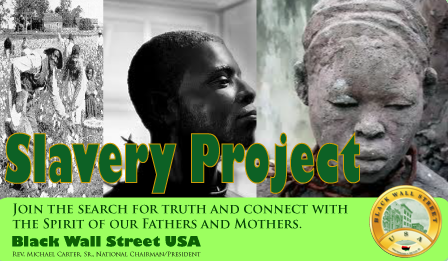
Alabama
Alaska
Arizona
Arkansas
California
Colorado
Connecticut
Delaware
Florida
Georgia
Hawaii
Idaho
Illinois
Indiana
Iowa
Kansas
Kentucky
Louisiana
Maine
Maryland
Massachusetts
Michigan
Minnesota
Mississippi
Missouri
Montana
Nebraska
Nevada
New Hampshire
New Jersey
New Mexico
New York
North Carolina
North Dakota
Ohio
Oklahoma
Oregon
Pennsylvania
Rhode Island
South Carolina
South Dakota
Tennessee
Texas
Utah
Vermont
Virginia
Washington
West Virginia
Wisconsin
Wyoming
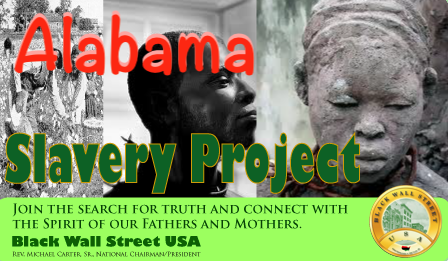
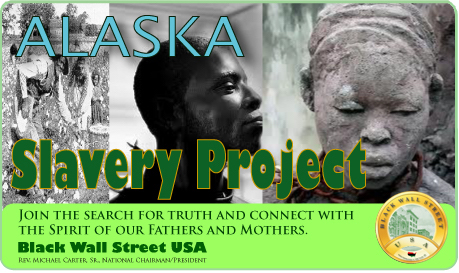



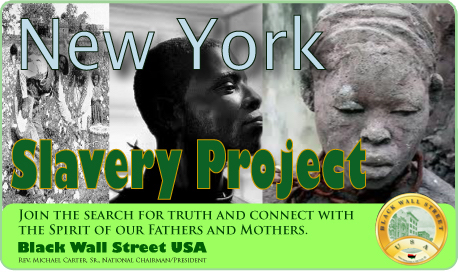

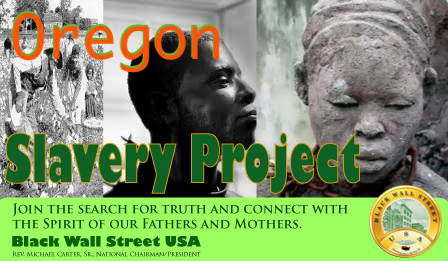
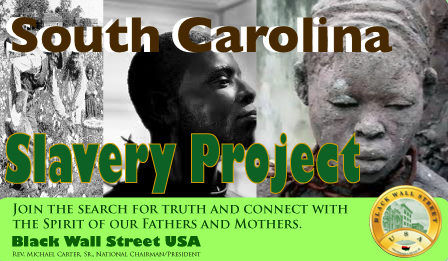
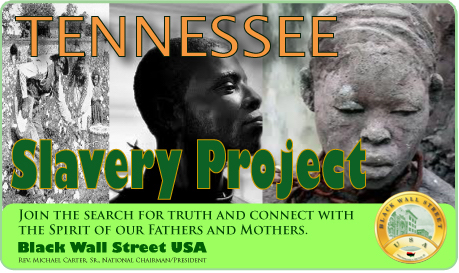
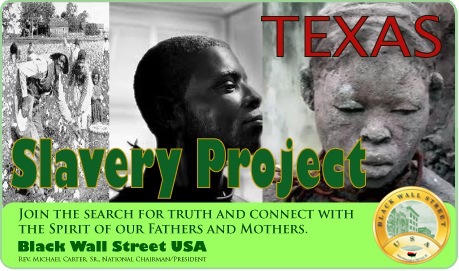



BlackWallStreet.org

Slave Records By State
See: Slave Records By State
Freedmen's Bureau Records
See: Freedmen's Bureau Online
American Slavery Records
See: American Slavery Records
American Slavery: Slave Narratives
See: Slave Narratives
American Slavery: Slave Owners
See: Slave Owners
American Slavery: Slave Records By County
See: Slave Records By County
American Slavery: Underground Railroad
See: American Slavery: Underground Railroad

